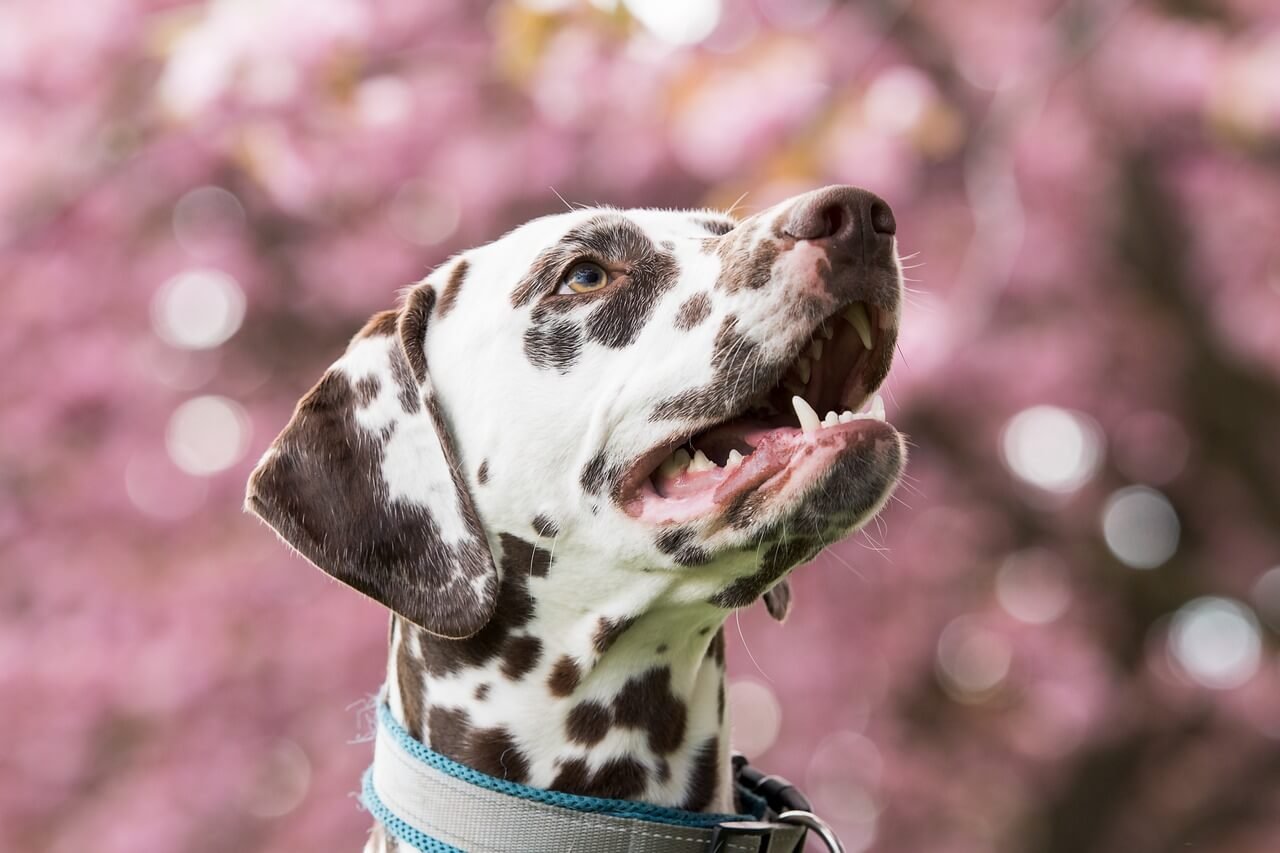Dog Nose Peeling: What You Need to Know
A dog’s nose is more than just a cute feature—it’s an essential part of their sensory experience and overall health. However, when your furry friend’s nose starts peeling, it can be concerning. Is it a sign of a serious issue, or is it simply a normal occurrence? Dog nose peeling can result from various factors, ranging from environmental influences to underlying health conditions. Understanding the causes, symptoms, and remedies can help you ensure your dog stays comfortable and healthy. In this guide, we’ll explore everything you need to know about dog nose peeling and how to address it effectively.
Common Causes of Dog Nose Peeling
If your dog’s nose is peeling, it’s important to identify the root cause before taking action. Here are some common reasons why your dog’s nose might be shedding its outer layer.
Dry Air and Weather Conditions:
Cold, dry winters or low humidity indoors can lead to a dry and peeling nose in dogs.Allergies:
Environmental or food allergies may cause irritation and flakiness on your dog’s nose.Excessive Licking or Scratching:
Dogs that lick or scratch their noses frequently may damage the skin, leading to peeling.Sunburn or UV Exposure:
Prolonged sun exposure without protection can harm sensitive nasal skin, causing it to peel.Underlying Health Issues:
Conditions like autoimmune disorders or infections can also contribute to nose peeling.
Identifying the cause is the first step toward addressing the issue and ensuring your dog’s comfort.

Signs Your Dog’s Nose Peeling Requires Attention
While some cases of dog nose peeling are harmless, others may indicate a more serious problem. Look out for these signs that warrant a visit to the vet.
Cracking or Bleeding:
If your dog’s nose is cracked or bleeding, it could signal an infection or injury that needs treatment.Persistent Redness or Swelling:
Redness or swelling around the nose area may indicate irritation or an allergic reaction.Discharge or Unusual Odor:
Excessive nasal discharge or a foul smell could point to an underlying infection.Behavioral Changes:
If your dog seems unusually lethargic or avoids eating due to discomfort, it’s time to consult a professional.Loss of Pigmentation:
A sudden change in the color of your dog’s nose could indicate a condition like vitiligo or lupus.
Recognizing these warning signs ensures timely intervention and prevents further complications.
Check this guide 👉Dog Nose Sunburn Treatment: Best 7 Expert Tips!
Check this guide 👉Dog Nose Fungus: Best 7 Expert Tips!
Check this guide 👉Dog Nose Dripping Clear: Best 7 Expert Tips!
Preventive Measures for Dog Nose Peeling | Remedies for Peeling Noses |
|---|---|
Keep your home humidified during winter | Apply vet-approved moisturizers to the nose |
Limit sun exposure and use pet-safe sunscreen | Offer fresh water to keep your dog hydrated |
Avoid harsh chemicals near your dog’s face | Feed a balanced diet rich in omega-3 fatty acids |
Monitor for signs of allergies | Consult a vet for persistent peeling issues |
Provide regular grooming and care | Use soothing balms for minor irritations |
How to Care for Your Dog’s Peeling Nose at Home
Taking care of your dog’s peeling nose at home can often resolve mild cases without needing professional intervention. Follow these steps to soothe and protect their sensitive skin.
Clean the Area Gently:
Use a damp cloth to clean away any dirt or debris from your dog’s nose. Avoid harsh soaps or chemicals.Apply a Pet-Safe Balm:
Choose a balm specifically designed for dogs to hydrate and protect their nose. Avoid human products, which may irritate their skin.Keep Them Hydrated:
Ensure your dog has access to plenty of fresh water, as hydration supports overall skin health.Limit Outdoor Time in Extreme Weather:
Protect your dog’s nose by reducing exposure to extreme cold, heat, or direct sunlight.Monitor Progress Regularly:
Check your dog’s nose daily to see if the peeling improves or worsens over time.
With consistent care, many cases of peeling can be resolved at home, keeping your dog happy and healthy.
When to Seek Veterinary Help for Dog Nose Peeling
While home care works for minor cases, some instances of dog nose peeling require professional attention. Knowing when to seek veterinary help ensures your dog receives the care they need.
Unexplained Weight Loss or Appetite Changes:
These symptoms paired with nose peeling could indicate a systemic health issue.Non-Healing Wounds or Sores:
Persistent wounds or sores on the nose may require antibiotics or specialized treatment.Severe Cracking or Bleeding:
Deep cracks or continuous bleeding should be evaluated by a vet to rule out serious conditions.Sudden Behavioral Changes:
If your dog becomes unusually aggressive or withdrawn, it could signal pain or discomfort.Recurrent Peeling Despite Treatment:
Ongoing issues despite home remedies suggest the need for diagnostic testing or advanced care.
Prompt veterinary care can prevent complications and ensure your dog’s long-term well-being.
Natural Remedies for Dog Nose Peeling
If you’re looking for natural ways to soothe your dog’s peeling nose, there are several safe and effective options to consider. These remedies can complement professional treatments or serve as standalone solutions for mild cases.
Coconut Oil:
Apply a small amount of organic coconut oil to moisturize and heal dry, peeling skin.Aloe Vera Gel:
Use pure, unscented aloe vera gel to reduce inflammation and promote healing.Oatmeal Paste:
Create a paste using ground oatmeal and water to gently exfoliate and hydrate irritated skin.Fish Oil Supplements:
Add fish oil to your dog’s diet to boost omega-3 intake, which supports skin health.Honey:
A dab of raw honey can act as a natural humectant, locking in moisture on your dog’s nose.
These natural remedies offer gentle ways to care for your dog’s nose while avoiding harsh chemicals.
Seasonal Challenges for Dog Noses
Different seasons bring unique challenges for your dog’s nose, making seasonal care essential. Tailoring your approach to the time of year helps prevent peeling and keeps their nose healthy.
Winter Dryness:
Cold air and indoor heating can dry out your dog’s nose. Use a humidifier to maintain moisture levels.Summer Sunburn Risks:
Dogs with light-colored noses are prone to sunburn. Apply pet-safe sunscreen before outdoor activities.Spring Allergies:
Pollen and other allergens can irritate your dog’s nose. Wipe their nose regularly to remove irritants.Fall Wind Exposure:
Strong winds can chap your dog’s nose. Protect them with a balm or limit outdoor time on windy days.Year-Round Hydration:
Regardless of the season, always ensure your dog has access to fresh water to support skin health.
Adapting to seasonal changes keeps your dog’s nose resilient and healthy throughout the year.
Building a Routine for Nose Care
Establishing a consistent routine for your dog’s nose care ensures ongoing health and minimizes the risk of peeling. A structured approach makes it easier to monitor and address issues promptly.
Daily Inspections:
Check your dog’s nose every day for signs of dryness, cracking, or irritation.Weekly Moisturizing:
Apply a pet-safe balm once or twice a week to keep their nose hydrated and protected.Regular Vet Check-Ups:
Include nose health in routine vet visits to catch potential problems early.Seasonal Adjustments:
Modify your care routine based on seasonal challenges, such as increased moisturizing in winter.Positive Reinforcement:
Reward your dog for cooperating during inspections or treatments to make the process enjoyable.
By building a routine, you create a foundation for lifelong nose health and strengthen your bond with your furry friend.
FAQ
Is it normal for my dog’s nose to peel occasionally?
Yes, mild peeling due to environmental factors or temporary dryness is normal. Persistent peeling, however, warrants further investigation.
Can I use human lotions on my dog’s nose?
No, human products often contain ingredients that are harmful to dogs. Stick to products specifically designed for pets.
How do I know if my dog’s peeling nose is caused by allergies?
Look for additional symptoms such as itching, sneezing, or gastrointestinal upset. Consult a vet for accurate diagnosis.
Should I be worried if my dog’s nose changes color?
Color changes accompanied by other symptoms like cracking or swelling should be evaluated by a veterinarian.
Can dehydration cause my dog’s nose to peel?
Yes, dehydration can lead to dryness and peeling. Ensure your dog has access to plenty of fresh water.
Ensuring Your Dog’s Nose Stays Healthy and Happy
A dog’s nose is not only adorable but also vital to their well-being. By understanding the causes of nose peeling and knowing how to address it, you can keep your furry companion comfortable and thriving. Whether through preventive measures, home care, or professional intervention, staying proactive ensures your dog’s nose remains in top condition. Remember, a little extra attention goes a long way in maintaining your dog’s overall health and happiness!
Canned Pumpkin for Cat Diarrhea: Best 7 Expert Tips! Natural remedy to firm stools, soothe upset bellies, and support gut health safely.
Can a Cat Give You Scabies? Best 7 Expert Tips! Discover the truth about feline mites, human skin risks, and how to protect yourself—without panic.
Cat Flea vs Human Flea: Best 7 Expert Tips! Discover the truth about bites, species, and how to eliminate infestations for good.
Weird Cat Behaviors: Best 7 Expert Tips! Discover why cats do strange things—and how to understand, not punish, their instincts for a happier home.





